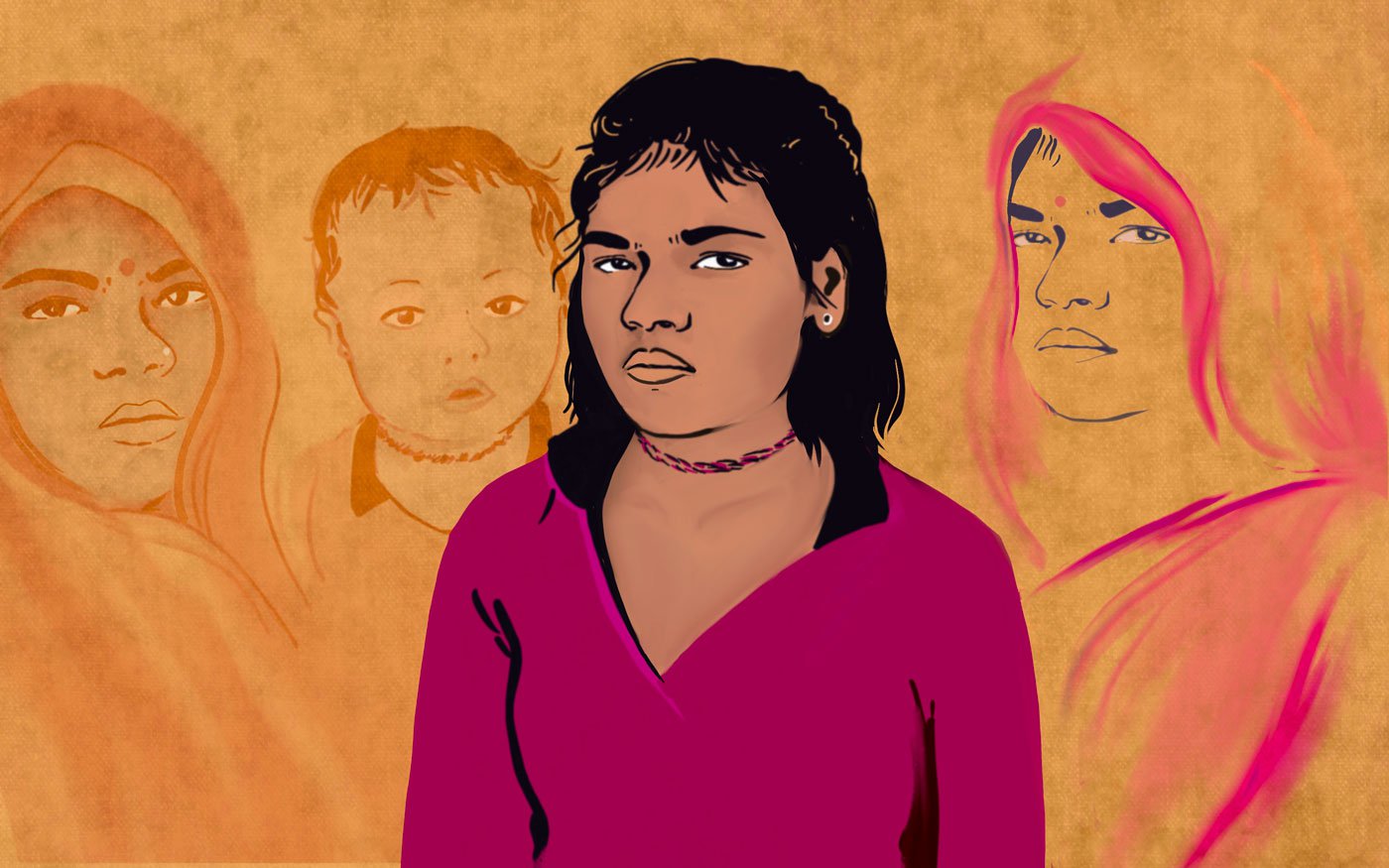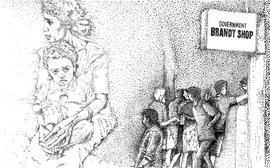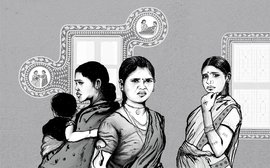Meena will be
married off anytime now. That’s because, she says, some months ago “I became a
problem.” Her younger cousin Sonu, who acquired ‘problem’ status several weeks
after Meena did, is also in line for marriage. ‘Problems’ are what girls like them
become when they start menstruating.
Meena, 14, and Sonu, 13, seated side by side on a string charpoy , look at each other when they talk, but mostly stare down at the sandy floor of Meena’s house, a little shy about discussing the change – menstruation – with a stranger. In the room behind them, a lone kid goat is tethered to a short peg in the ground. It can’t be let out for fear of wild animals which lurk around Baithakva, a hamlet in Uttar Pradesh’s Koraon block. So it stays indoors, they tell us, in this tiny home hemmed in by several others.
The girls have just figured out what menstruation is – as something they should be ashamed of. And fear – which they have inherited from their parents. Concerns about the safety of women and anxiety about a possible pre-marital pregnancy once a girl becomes sayyani (mature) push the families of this hamlet in Prayagraj (formerly Allahabad) district to arrange early marriages of their daughters – often at as young an age as 12.
“How are we expected to keep our girls safe once they become old enough to get pregnant?” asks Meena’s mother Rani, 27, who herself was married and a mother by age 15. Sonu’s mother Champa, now around 27 too, also remembers getting married at the same age as her daughter is now – 13. The six women gathered around us all say that marriages of girls who are 13 or 14 is the norm rather than an exception in this hamlet. “ Hamara gaon ek doosra zamana mein rehta hai [Our village lives in another era]. We don’t have a choice. We are helpless,” says Rani.
Child marriage is a widespread practice across a large cluster of districts in the north-central belt of Uttar Pradesh, Madhya Pradesh, Rajasthan, Bihar and Chhattisgarh. A 2015 district level study jointly conducted by the International Centre for Research on Women and UNICEF says that “more than 50 per cent women in almost two-thirds of districts in these states are married off before the legal age.”
The Prohibition Of Child Marriage Act, 2006 forbids marriage if the girl is less than 18 years old and the boy is not yet 21. The punishment for promoting or permitting such a marriage is up to two years rigorous imprisonment and a fine which may extend up to Rs. 1 lakh.
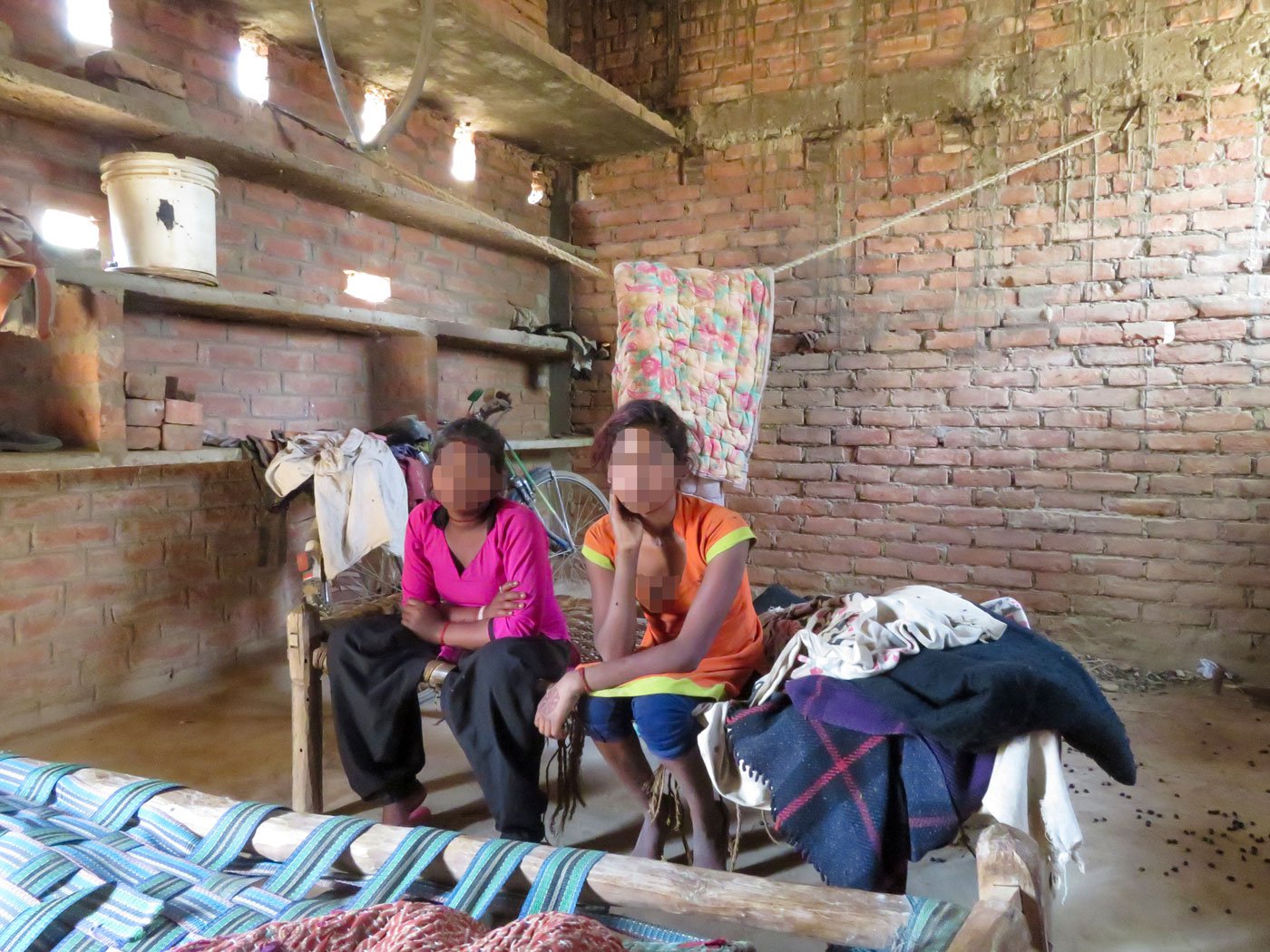
Meena and Sonu have just figured out what menstruation is – as something they should be ashamed of
“The question of
getting caught for anything illegal does not arise,” says Nirmala Devi, 47, an
anganwadi
worker from the
village, “as there is no birth certificate to refer to.” She’s right –
42 per cent of children
born in Uttar Pradesh’s
rural areas do not have their births registered, according to the National
Family Health Survey (NFHS-4, 2015-16). The figure for Prayagraj district is
even higher at 57 per cent.
“People don't get to hospital,”
she adds. “Earlier, we would just make a phone call and get an ambulance from
the Koraon Community Health Centre [CHC], 30 kilometres away. But now we are
required to use a mobile App – 108 – which needs 4G connectivity. But there’s
no network here and you can't get to the CHC for delivery,” she explains.
In other words, the switch to an app has made a bad situation worse.
In a country that sees 15
lakh child brides like Sonu and Meena each year, the law alone doesn’t deter
families from continuing with the practice. In UP, one out of five women is
married before the legal age, says NFHS-4.
“
Bhagaa dete hain
[They shoo me
away],” says 30-yera-old Sunita Devi Patel, an ASHA worker (Accredited Social Health
Activist) in Baithakva and surrounding hamlets, about the parents she tries to engage with. “I plead
with them to wait for the girls to grow up. I tell them it is dangerous for them
to get pregnant at such a young age. They don’t pay any attention and tell me
to leave. When I go the next time, perhaps a month or so later, the girl is
already married!”
But the parents have their own reasons to worry, “There is no toilet in the house,” complains Meena’s mother Rani. “Every time they leave to go into the fields for that, some 50 to 100 metres away, or even when they go out to graze the animals, we worry that something bad might happen to them.” She recalls the gruesome rape and murder of a 19-year-old Dalit girl in September 2020 by upper caste men in in UP’s Hathras district. “ Hamein Hathras ka dar hamesha hai [We are always worried about something happening like in Hathras].”
The deserted road leading into Baithakva from Koraon – the district headquarters – winds 30 kilometres through open scrub forest and fields. A five-kilometre stretch that passes through jungle and hillocks is particularly deserted and dangerous. Locals say that they have sighted bodies with bullet wounds flung into the bushes there. A police chowki (post) would help, they say, as would better roads. During the monsoons, some 30 villages in the area around Baithakva are completely marooned, sometimes for weeks.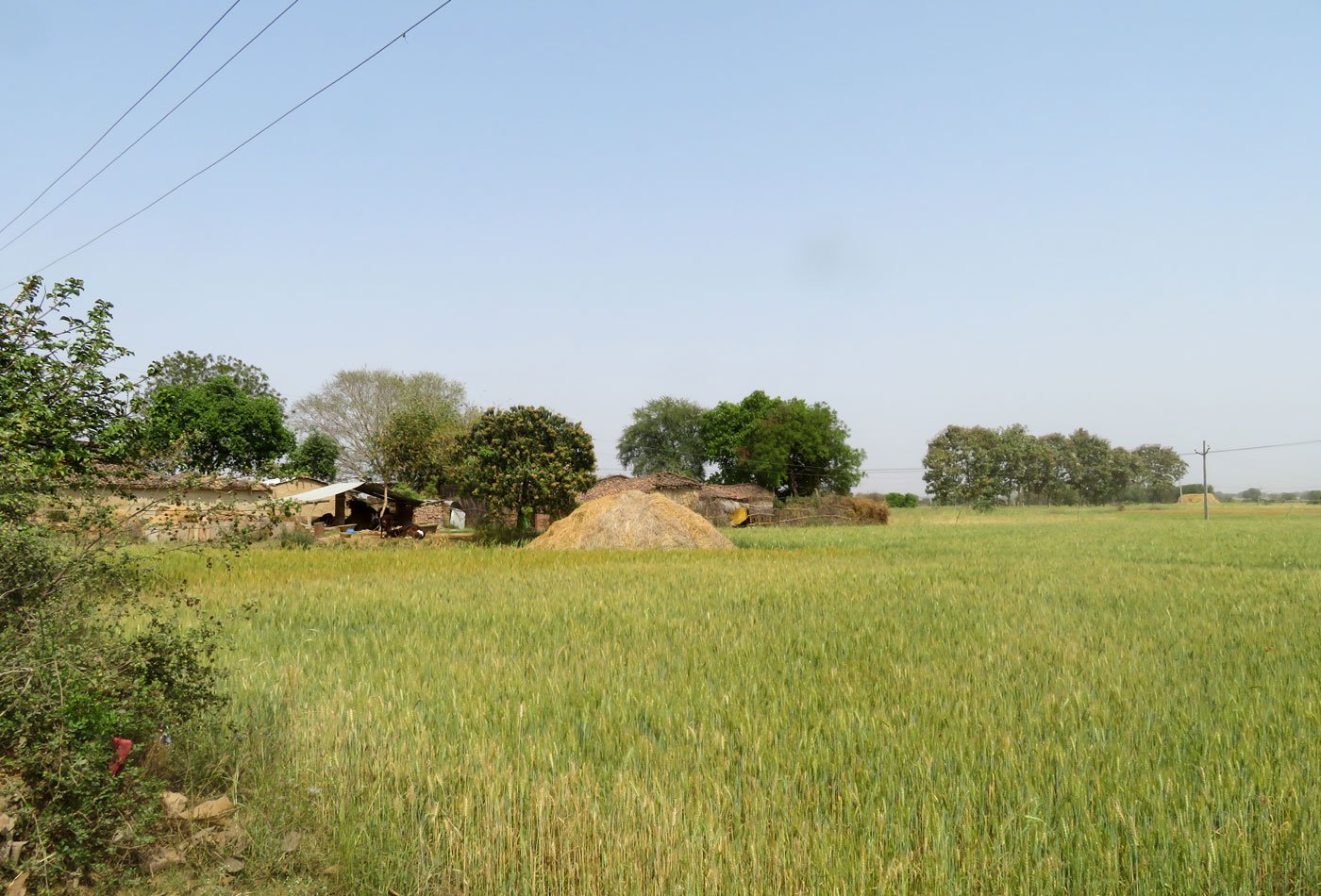
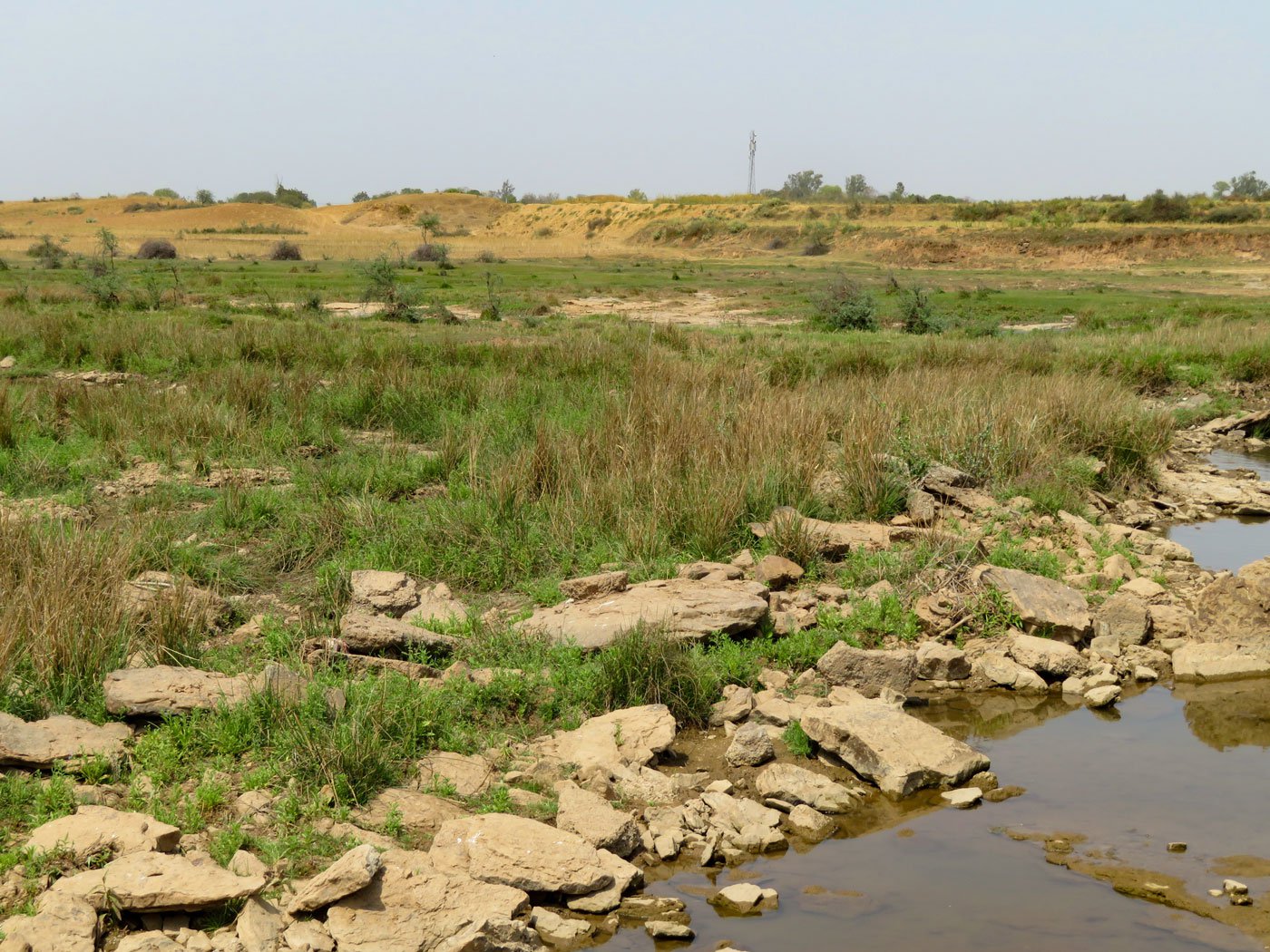
Baithakva hamlet: The women gathered all say that marriages of girls who are 13 or 14 is the norm rather than an exception here
Around the hamlet, the low,
brown and dry Vindhaychal hills, splashed with prickly scrub undergrowth, rise
up on one side and mark the state’s border with Madhya Pradesh. The single
semi-tarred road has Kol houses and fields mostly belonging to OBC families
(with only a few small plots held by Dalits), straggling on either side.
Fear pervades this hamlet of
around 500 Scheduled Caste families, all of them
Kols
, and some 20 OBC households. “Just a few months ago, one of our girls was walking in
the village and some [upper caste] boys forced her to sit on
their motorbike and go for a ride with them. She somehow managed to jump off, picked
herself up and ran home,” Rani says, her voice anxious.
On June 12, 2021, a 14-year-old Kol girl went missing and to date has not been found. Her family says they filed a first information report (FIR) but were unwilling to show it to us. They feared drawing attention to themselves and angering the police, who others say arrived to enquire into the incident only two weeks after it happened.
“We are poor people of a certain status [Scheduled Caste]. You tell me, do the police care? Does anyone care? We live with the fear and the shame [of rape or abduction],” says Nirmala Devi, lowering her voice as she speaks.
Nirmala, a Kol herself, is one of the very few in the hamlet with the BA degree that she studied for after her marriage to Murarilal, a farmer. A mother of four educated boys, she supported their studies in a private school in nearby Dramandganj town of Mirzapur district with her own earnings. “I finally got out of the house only after my third pregnancy,” she says with a nervous laugh, and adds, “I wanted to be able to educate my children; that was the driving force.” Nirmala now also supports the education and training of her daughter-in-law Sridevi as an auxiliary nurse midwife (ANM) in Prayagraj city. Sridevi married her son when she turned 18.
But other parents in the village are more fearful. According to the National Crime Records Bureau, the state of Uttar Pradesh recorded 59,853 crimes against women in 2019. That is, 164 crimes every single day on average. These include rape of minors as well as adult girls and women, kidnapping, abduction and human trafficking.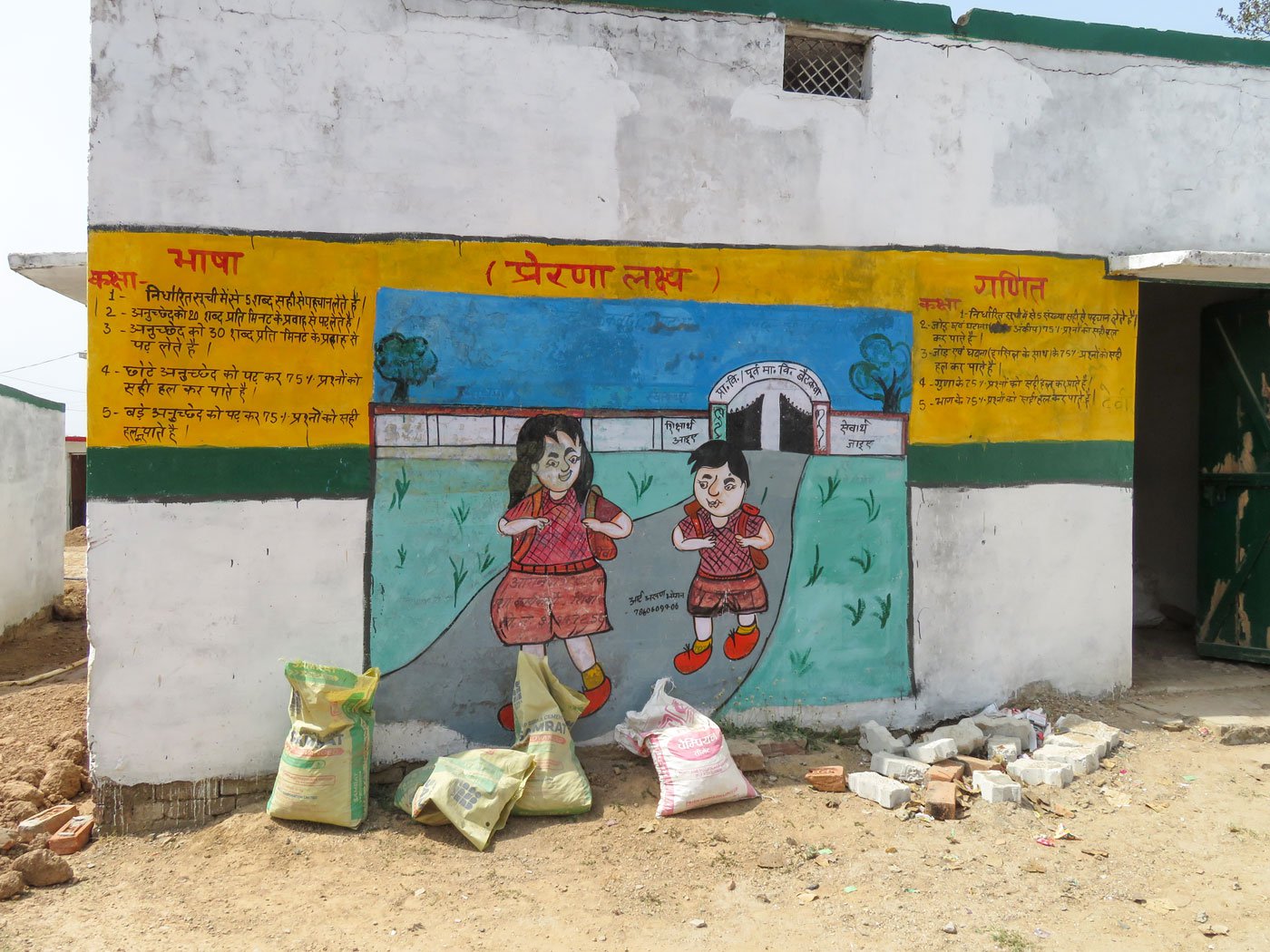
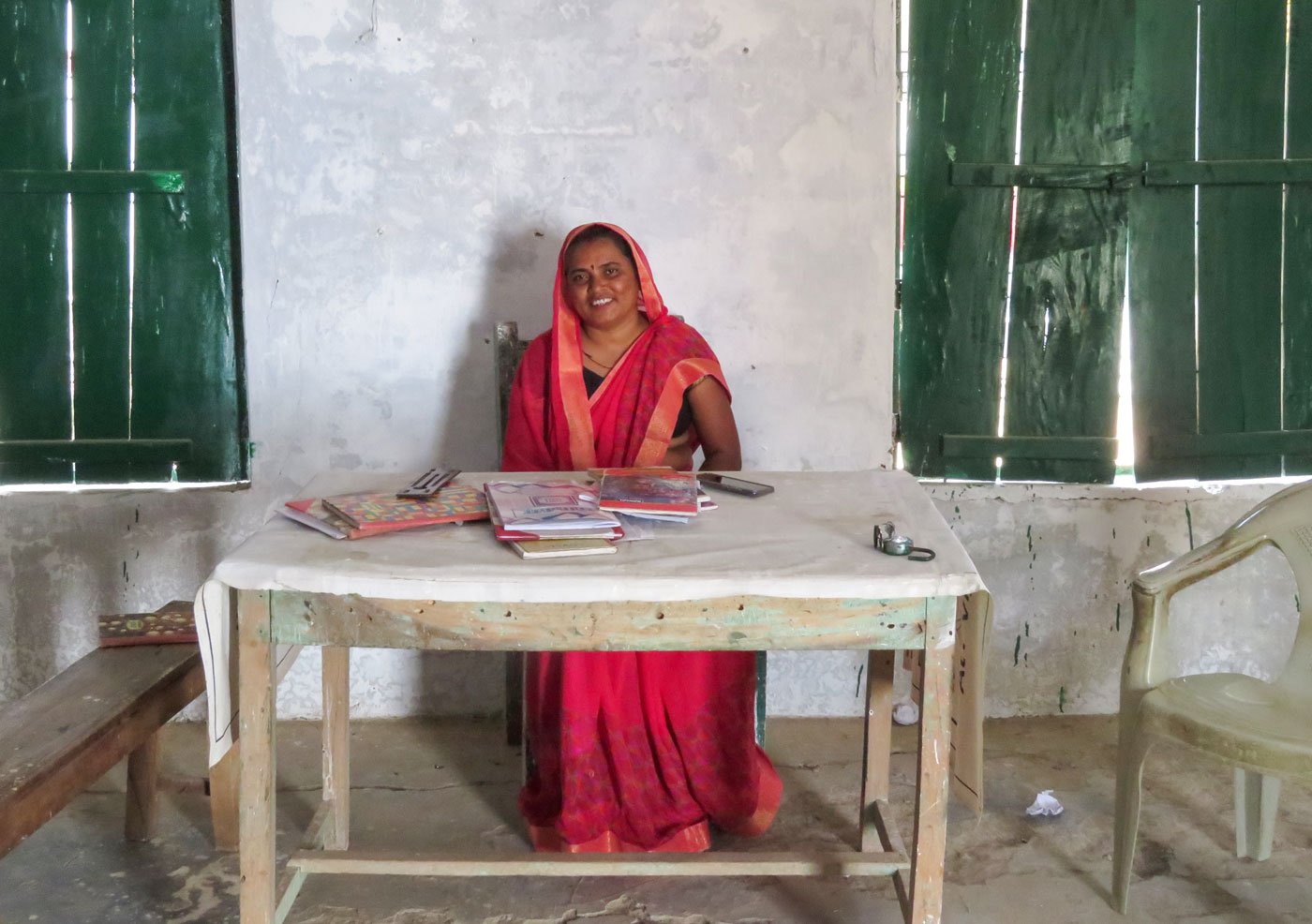
Nirmala Devi (right), the anganwadi (left) worker, says birth certificates are rare, so there is no question of anyone getting caught for underage marriages
“When girls start getting noticed [by men] it becomes difficult to keep them safe,” says Mithilesh, a cousin of Sonu and Meenu. “Dalits here have one wish: to keep our name and dignity. Marrying our girls off early can ensure that.”
A worried Mithilesh leaves behind his son and daughter, aged 9 and 8, in the village when he migrates to work at brick kilns or for sand mining jobs wherever he can find them.
His monthly earnings of around Rs. 5,000 supplement his wife’s income from selling firewood and working in the fields of others during harvest time. Around their own hamlet, cultivation is not an option. “We can’t grow any crops as wild animals eat everything. Wild boars even come into our compounds because we are next to the jungle,” says Mithilesh.
According to Census 2011, 61 per cent of the population of
Deoghat
, the village in
which Baithakva is a hamlet, is engaged in agricultural labour, household
industry and other jobs. “In every home more than one man will migrate for wage
work,” says Mithilesh. They go to Allahabad, Surat and Mumbai in search of
employment, he adds, working at brick kilns or on daily wage jobs in other sectors,
earning about Rs. 200 a day.
“Koraon is the most neglected of Prayagraj district’s 21 blocks,” says Dr. Yogesh Chandra Srivastava. He is a scientist at the Sam Higginbotham University of Agriculture, Technology and Sciences in Prayagraj, and has worked in this region for 25 years. “The overall district figures do not reflect the sad state of affairs here,” he adds. “Take any parameter – from crop yield to school dropouts, to migration for low-end jobs, poverty, child marriage and infant mortality – Koraon in particular is not developed.”
Once married, Sonu and Meena will move to the homes of their husbands,
in a village some 10 kilometres away. “I have not yet met him [the groom],”
says Sonu. “But I saw his face on my paternal uncle’s mobile phone. I talk to
him often. He’s a few years older than me, around 15, and works as a helper in
a kitchen in Surat.”
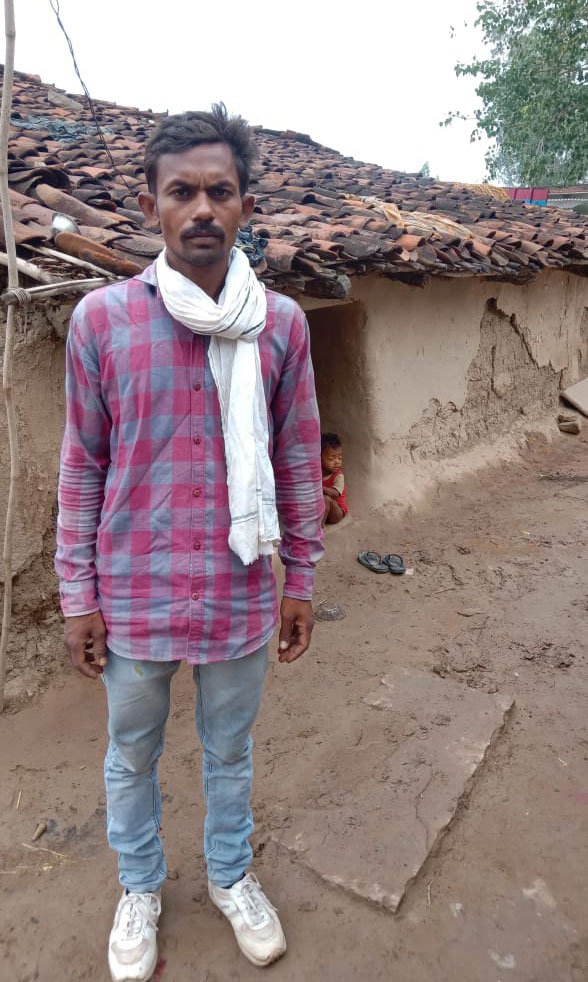
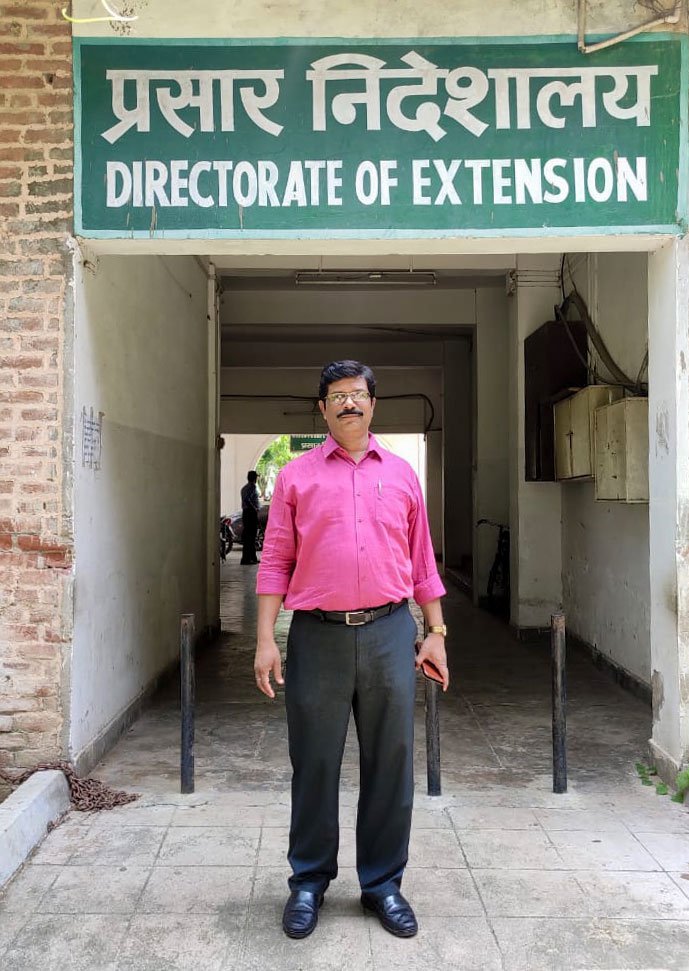
Left: "When girls start getting noticed [by men] it becomes difficult to keep them safe,” says Mithilesh. Right: Dr. Yogesh Chandra Srivastava says, “Take any parameter – Koraon block in particular is not developed"
This January, schoolgirls in the Baithakva government middle school had a chance to get free pads along with a bar of soap and a towel, and to watch a video on hygienic practices during menstruation shown in their school by a visiting NGO. Also, under the central government’s Kishori Suraksha Yojana , girls from Classes 6 to 12 are eligible to receive free sanitary napkins . The programme was introduced in Uttar Pradesh by then chief minister Akhilesh Yadav in 2015.
But neither Sonu nor Meena go to school anymore. “We don’t attend school, so we don’t know about this,” says Sonu. Both of them would have liked to have had the free sanitary pads instead of the cloth they presently use.
Though about to be married, both girls have little or no idea about sex, pregnancy or even menstrual hygiene. “My mother told me to ask my bhabhi [older paternal cousin brother’s wife] about it. My bhabhi told me not to lie down next to any [family] man from now on, or it will be a big problem,” Sonu says, lowering her voice as she speaks. The eldest daughter in a family of three girls, Sonu dropped out of school in Class 2 at age 7 to take care of her younger sisters.
She then started accompanying her mother Champa when she went to the fields for agricultural labour, and later went with her into the forested hills behind their home to gather firewood – some for their own use and some for sale. Two days of foraging could yield women here firewood worth Rs. 200. “Enough to buy us oil and salt for a few days,” says Meena’s mother Rani. Sonu used to also help herd the family’s 8 to 10 goats. Over and above these tasks, she helps her mother cook and complete household chores.
Both Sonu and Meena’s parents work as agricultural labourers. The daily rate around here is Rs. 150 for women and Rs. 200 for men. That is, when they can find work, which at the best of times means 10-12 days in a month. Sonu’s father Ramswaroop used to travel to nearby towns and cities, even Prayagraj, to find wage work until he got tuberculosis towards the end of 2020 and died the same year.
“We spent around 20,000 rupees on his treatment – I had to borrow the money from family and others,” says Champa. “As his health deteriorated and we needed more money, I would sell a goat for around 2,000 to 2,500 rupees. We kept only this one,” she adds, pointing to the lone tethered kid in the room behind them.
“It was after my father died that my mother began to talk of my marriage,” says Sonu quietly, staring at the fading mehendi on her hands.
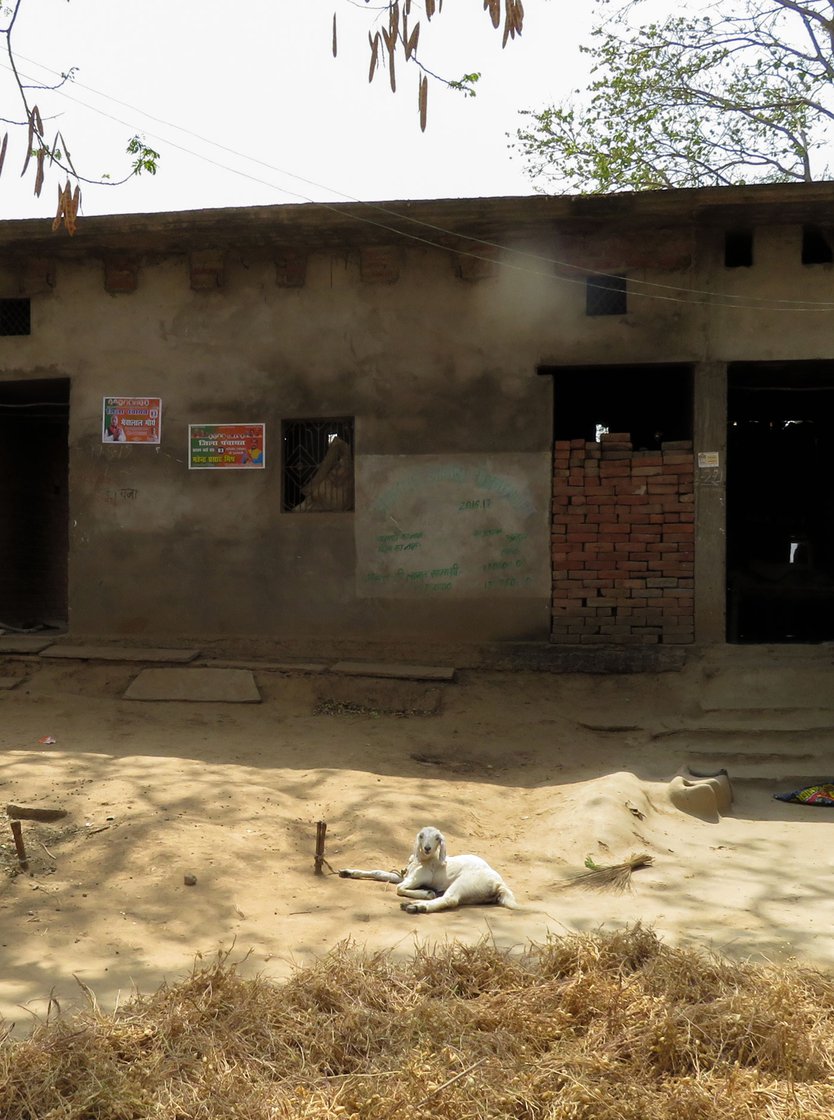
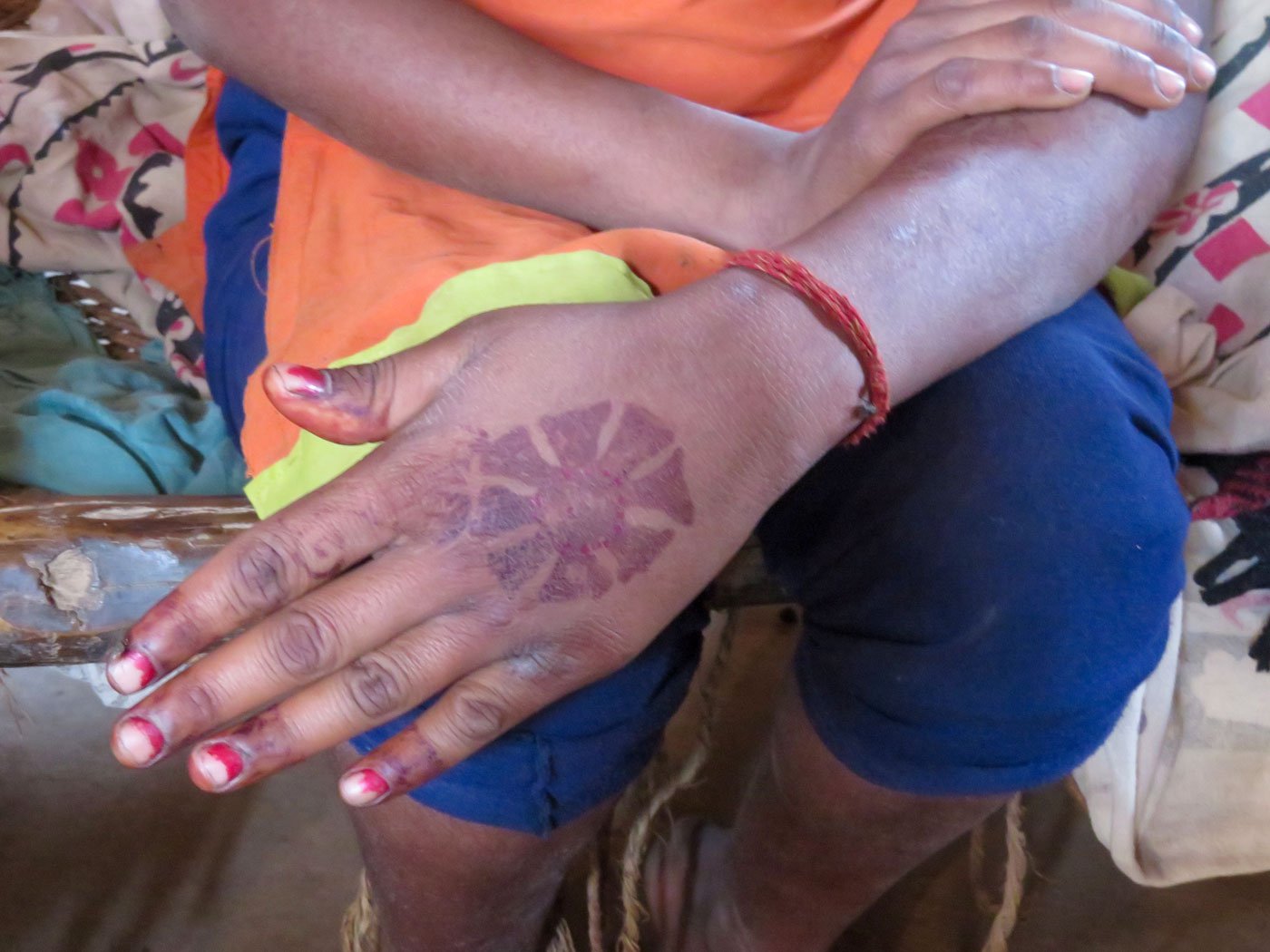
Meena and Sonu’s joint family home. “After my father died my mother began to talk of my marriage,” says Sonu, staring at her fading mehendi
Sonu and Meena’s mothers – Champa and Rani – are sisters, who married two brothers. Their joint family of 25 people lives in a couple of rooms built under the Pradhan Mantri Awas Yojana housing scheme in 2017, with walls of exposed brick and a cement roof. Their older homes of mud and thatch, where they cook and where some of them still sleep, stand right behind these.
Meena was the first of the two cousins to start menstruating and it helped that the boy they found for her had a brother. The alliance was fixed for Sonu as well to marry into the same house – a point of comfort for the mothers.
Meena is the eldest in her family and has two sisters and a brother. She dropped out of school in Class 7, more than a year ago. “I used to have some pain in my stomach. I would lie at home most of the day. My mother would be out in the fields and my father would go for wage work to Koraon. Nobody insisted I go to school, so I didn’t go,” she says. Later, she was diagnosed with kidney stones, but the treatment was too expensive and required several trips to the district headquarters 30 kilometres away, so the idea was dropped. And so too, with it, was her education.
She still has occasional pain in the abdomen.
Even from their meagre earnings, most of the Kol families struggle to put aside some money for their daughters’ wedding day. “We have saved around 10,000 rupees for their marriage. We will have to give a feast for 100-150 people – poori , sabzi and meetha, ” says Rani. The idea seems to be that both girls will be married on the same day, in the same event, to the two brothers.
The parents believe that they will be done with their responsibilities and the girls with their childhood. Sonu and Meena have their own logic, shaped by their circumstances and social conditioning: “ Khana kam banana padega. Ham toh ek samasya hain ab ,” they say. “There will be fewer mouths to feed. We are a problem right now.”
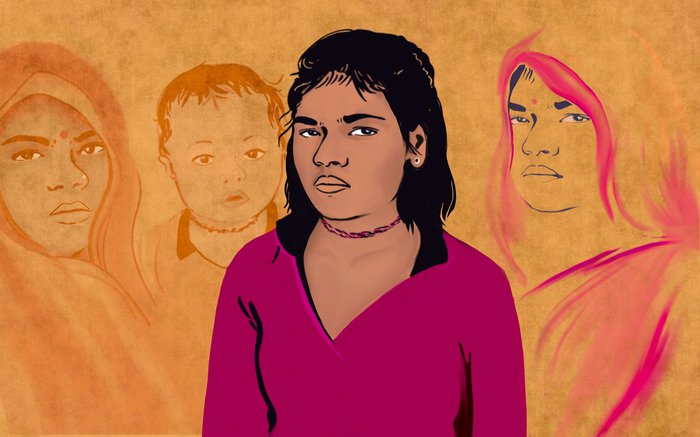
Meena was the first of the two cousins to start menstruating and it helped that the boy they had found for her had a brother. The alliance was fixed for Sonu as well to marry into the same house
Child marriage
, notes UNICEF,
puts young girls at high risk of dying due to complications at childbirth and
during pregnancy. With girls here being married off so young, “there is no
chance to check iron or give them folic acid tablets,” says ASHA worker Sunita
Devi, referring to the standard protocol for new mothers-to-be. In fact, only 22 per cent of young mothers in
rural Uttar Pradesh will have ante-natal visits – the lowest such figure for any
state in the country.
That number appears in
a recent report
published by the
union Ministry of Health and Family Welfare. The report also records that over
half the women in UP – 52 per cent – in the 15-49 age group are anaemic –
which places them at heightened health risk
during pregnancy, as it does the children they bear. Besides, 49 per cent of all rural children in UP under the age of 5 are stunted
and 62 per cent are anaemic – perpetuating a cycle of ill-health and risk.
“Girls’ nutrition is not at all a priority. I
have seen that they stop giving the girl child milk once her marriage is fixed,
as they feel she will be going away. Any saving is welcome, such is their
majboori
[compulsion],” observes Sunita.
Rani and Champa’s minds, however, are focused elsewhere
at this time.
“We are worried that the money we have put together should not get stolen before the wedding. People know we have the cash with us,” says Rani. “I will also have to take a loan of around 50,000 rupees.” With that, she believes, the ‘problem' dogging them “will be over.”
The reporter thanks Prof Arif A. Broadway, Director of Extension Services at SHUATS, Allahabad, for his invaluable help and inputs.
The names of some people in this story have been changed to protect their identities.
PARI and CounterMedia Trust's nationwide reporting project on adolescent girls and young women in rural India is part of a Population Foundation of India-supported initiative to explore the situation of these vital yet marginalised groups, through the voices and lived experience of ordinary people.
Want to republish this article? Please write to [email protected] with a cc to [email protected] .
